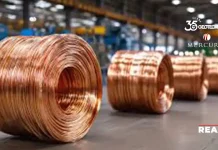3D printing has become a popular technique among various industries due to its ability to create complex and customized objects. However, this process results in hefty costs for companies. In this situation, plastic materials emerge as a cost-effective solution. The 3D printing plastics approach offers exceptional strength, flexibility, and ease of manufacturing.
In this blog, we will explore the types of plastics used in 3D printing, their benefits, and how they contribute to a greener manufacturing approach.
Let’s get started!
What are 3D Printing Plastics?
3D printing plastic refers to the process of 3D printing using plastic materials. Plastics are commonly used due to their strength, low cost, and ease of manufacturing, despite the wide range of materials available for the process. They offer versatility in terms of properties like strength, flexibility, and durability, making them suitable for various applications. 3D printing uses plastic materials for easy processing, enabling complex geometries and intricate designs that may be difficult or costly to produce using traditional methods.
However, plastics are generally more cost-effective compared to other materials like metals, and they are widely used in various industries. The latest report by Extrapolate states that the global 3D printing plastics market is expected to reach USD 5,210.6 million by 2030, at a compound annual growth rate (CAGR) of around 25.69%. This statistic underlines the significant growth in this industry.
4 Pivotal Types of 3D Printing Plastics
Below are some commonly used plastics for 3D printing, each with its own unique properties and applications, totaling four types.
1. Thermoplastics
Thermoplastics are the most commonly used type of plastic in 3D printing. They have the ability to go through multiple melt and solidification cycles, making them suitable for recycling and reusing. Examples of thermoplastics used in 3D printing include ABS (Acrylonitrile Butadiene Styrene), PLA (Polylactic Acid), PETG (Polyethylene Terephthalate Glycol), and Nylon.
2. High-Performance Plastics
High-performance plastics are utilized in applications that require exceptional mechanical and thermal properties. These plastics offer high strength, heat resistance, and chemical resistance. Examples of these plastics used in 3D printing include PEEK (Polyether Ether Ketone), PEKK (Polyether Ketone Ketone), and ULTEM (Polyetherimide).
3. Flexible Plastics
Flexible plastics are employed to create objects that require elasticity and flexibility. These plastics can be bent, stretched, and compressed without undergoing breakage. TPU (thermoplastic polyurethane) and TPE (thermoplastic elastomer) are commonly used flexible plastics in 3D printing.
4. Composite Plastics
Composite plastics are a combination of plastic and other materials, such as carbon fiber or glass fiber. These materials enhance the strength, stiffness, and durability of the printed objects. Composite plastics are often used in industries such as aerospace and automotive for lightweight and high-performance applications.
Benefits of 3D Printing Plastics
The use of plastics for 3D printing offers several benefits that make them popular in various industries and applications. Some of its key advantages include:
● Versatility
Plastics used in 3D printing offer a wide range of properties, allowing for the creation of objects with different characteristics such as strength, flexibility, and durability. This versatility makes it suitable for a diverse range of applications, from prototyping to end-use part production.
● Cost-Effectiveness
3D printing plastic materials are generally more cost-effective compared to other materials, like metal. The lower cost of plastic filaments and resins allows them to be combined to create intricate geometries without the need for expensive tooling, making 3D printing an affordable manufacturing method.
● Customization and Complexity
3D printing allows for the creation of highly customized and complex designs. Plastics can be easily molded and shaped during the printing process, enabling the production of intricate and unique objects.
● Reduced Material Waste
Plastics for 3D printing have the advantage of producing minimal material waste compared to traditional manufacturing processes. The additive nature of 3D printing allows for precise material deposition, minimizing the amount of excess material generated during production.
● Availability of Variety
There is a wide variety of plastic materials available for 3D printing, each with its own unique properties. From standard plastics like ABS and PLA to high-performance materials like PEEK and ULTEM, the range of options allows for the selection.
Can 3D Printing Plastics be Recycled after Use?
The use of plastics in the 3D printing process often involves the use of plastic filaments as the raw material for creating objects. Plastics that are particularly derived from fossil fuels have a significant carbon footprint. The extraction, production, and disposal of plastics contribute to greenhouse gas emissions and pollution.
Recycling and repurposing plastic waste is one way to create sustainable 3D printing materials. Recycling plastics from various industries and converting them into filaments for 3D printers helps reduce plastic waste and promotes a circular economy.
There are numerous initiatives and companies working on recycling 3D-printed plastics. For example, collaborations between companies like HP and Ford Motor Company are exploring opportunities to recycle 3D-printed parts and use the recycled plastic in other manufacturing processes.
A Bio-Based Approach for 3D Printing Plastics
3D printing offers a multitude of benefits to several industries by reducing material waste. This material is in high demand for its durability, low cost, and higher strength, which is resulting in increased demand. Meanwhile, various companies are looking for a specific material that has the features of plastic while adhering to sustainability.
To meet this increasing demand, efforts are being made by companies and organizations. Sustainable alternatives, such as bio-based and biodegradable plastics, are being developed for 3D printing. These materials are derived from renewable resources and can break down naturally over time. It is cost-effective, robust, durable, and also reduces their environmental impact. PLA (Polylactic Acid) is an example of a bio-based and biodegradable plastic used in 3D printing. The most recognized company in this field is Futerro PLA. It offers an innovative, eco-friendly alternative to conventional plastics. Its lactic acid and polylactic acid, 3D printing alternatives, show a sustainable future.
To Summarize
3D printing plastics have revolutionized the world of manufacturing and design. Their ability to create complex and customized objects has opened up countless possibilities across various industries. They offer strength, flexibility, and heat resistance. The wide range of plastics available caters to various application needs, from prototyping to production-grade parts.
This technology also fosters sustainability through the development of eco-friendly materials, such as bio-based and biodegradable plastics, as well as the recycling and repurposing of plastic waste. As technology advances, more sustainable plastic materials will be developed in the field of 3D printing, enabling innovation and contributing to a more sustainable future.
Browse More Posts:-
Computational Biology Market
Recycled Aluminum Market
Air Purifier Market
Cashew Milk Market




